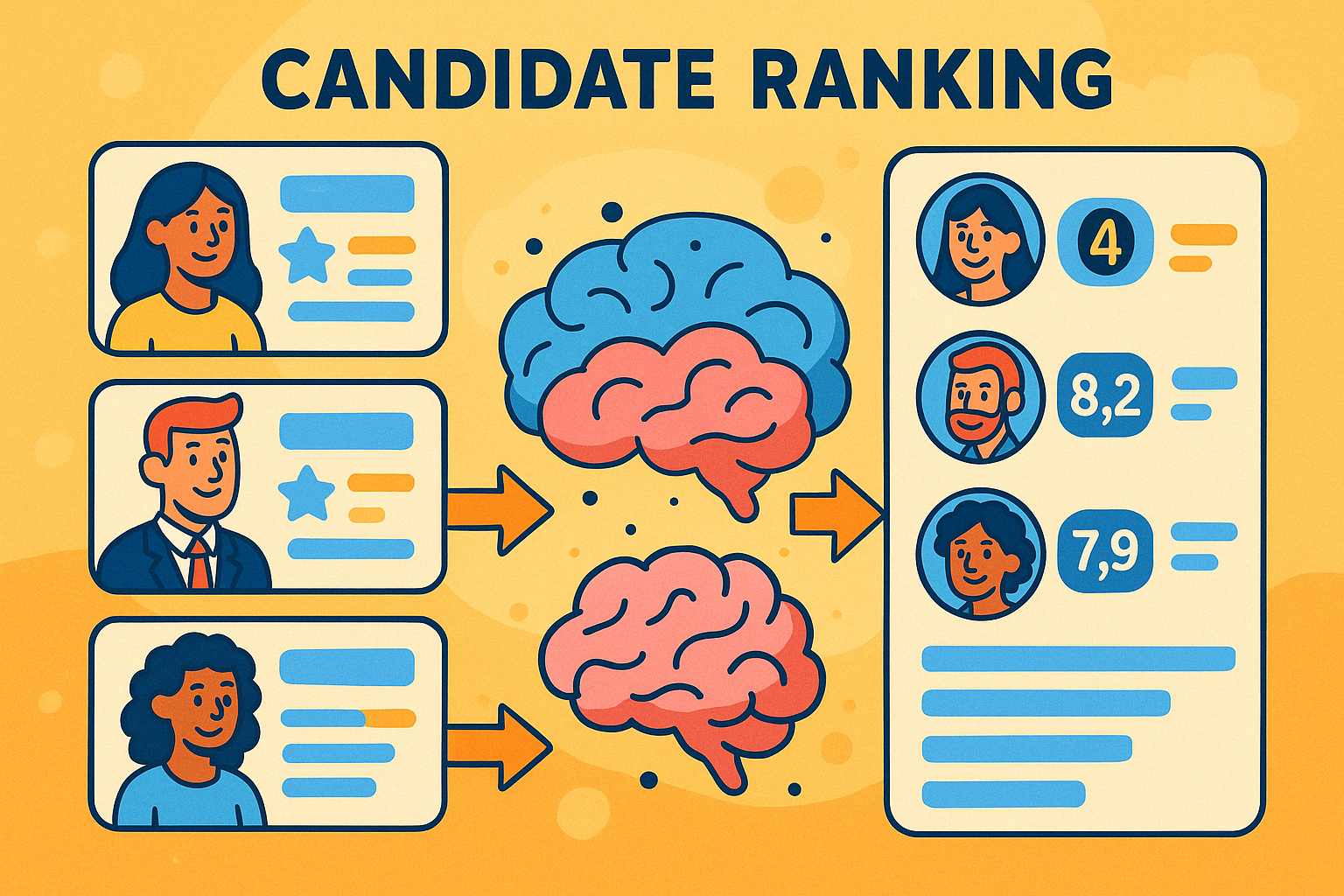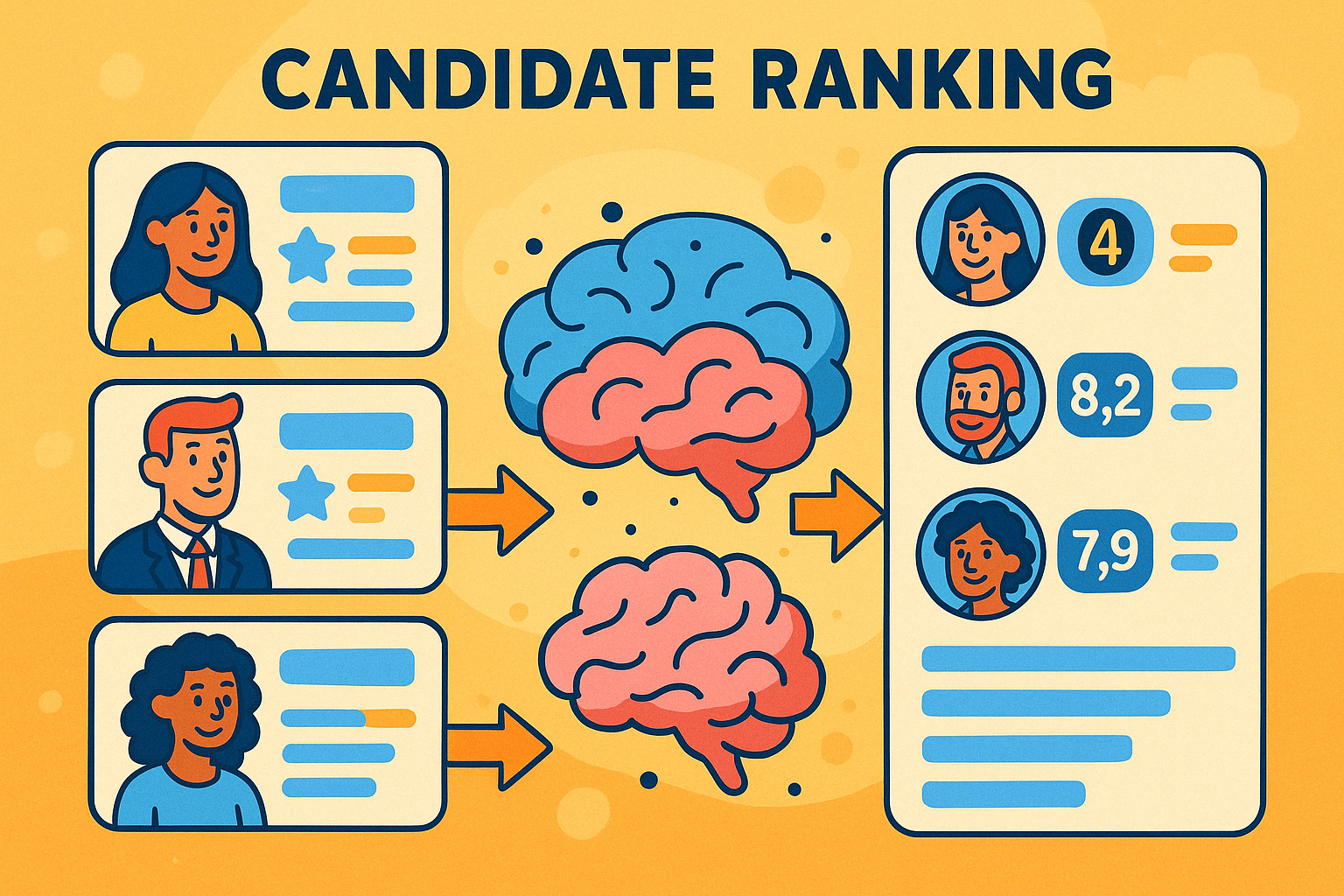Candidate Ranking: A 101 Guide

Candidate ranking uses data-driven methods to order job applicants by how well they fit a role, streamlining the screening process and helping recruiters focus on top talent. Below is an overview of its core principles, workflows, benefits, challenges, and best practices.
What Is Candidate Ranking?
Candidate ranking is the process of assigning each applicant a numeric or ordinal score based on factors like resume‑position keyword overlap, assessment results, and interview feedback, then sorting applicants from highest to lowest overall fit.
How It Works
Data Collection
Structured Inputs: Years of experience, education level, certifications.
Unstructured Inputs: Free‑text resume sections, cover letters, interview notes.
Feature Extraction
Keyword Metrics: Counting exact matches (e.g., “Python,” “MBA”).
Semantic Similarity: Applying NLP embeddings to detect related concepts (“UX design” vs. “user experience”).
Assessment Scores: Integrating results from skills tests or personality questionnaires.
Interview Ratings: Converting recruiter evaluations (e.g., on a 1–5 scale) into standardized scores.
Weighted Scoring
Each factor receives a weight reflecting its importance for the role (e.g., skills 40%, experience 30%, interview 30%).
The ranked score = ∑(factor_score × weight).
Sorting and Presentation
Applicants are displayed in descending order of score within the ATS (Applicant Tracking System).
Recruiters can filter or segment top tiers (e.g., top 10% “A‑players”).
Key Benefits
Efficiency: Cuts manual screening time by 50–80%, letting recruiters address other high‑value tasks.
Consistency: Ensures every applicant is judged by the same quantifiable criteria, reducing random bias.
Proactivity: Highlights passive or re‑engaged candidates who match new openings.
Transparency: Provides clear rationale (component scores) for candidate ordering.

Common Challenges
Overemphasis on Keywords: May reward applicants with keyword-stuffed resumes over genuinely qualified ones.
Data Quality: Incomplete profiles or outdated resumes lead to misleading scores.
Bias Risks: Historical data may encode unfair patterns—routine audits and fairness constraints help mitigate this.
Human Oversight: Relying solely on scores risks overlooking soft skills or cultural fit that algorithms can’t quantify.
Best Practices
Maintain Rich Candidate Data: Encourage applicants to complete full profiles.
Regularly Retrain Models: Update weighting and taxonomies for emerging skills.
Combine with Manual Review: Use ranking to prioritize, not to replace, recruiter judgment.
Monitor Fairness: Track demographic metrics across ranked tiers to detect and correct skew.
Provide Explanations: Surface sub‑scores (e.g., “Technical Fit: 85/100,” “Interview Fit: 90/100”) so recruiters understand the results.
Future Trends
Integrated Video Analysis: Scoring based on speech clarity and engagement during recorded interviews.
Culture‑Fit Scoring: AI assessing alignment with company values from questionnaire responses.
Live Market Signals: Dynamic re‑ranking based on labor‑market supply/demand shifts (e.g., demand for cloud skills spikes).
By combining structured scoring with human expertise, candidate ranking transforms hiring from a tedious task into a focused, data‑backed process—ensuring the best matches rise to the top.
From recruiting candidates to onboarding new team members, MokaHR gives your company everything you need to be great at hiring.
Subscribe for more information

